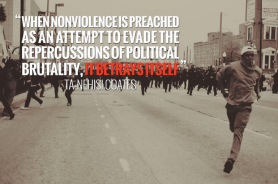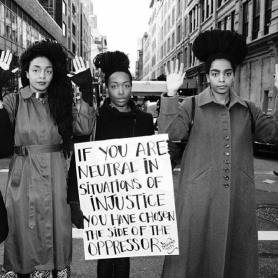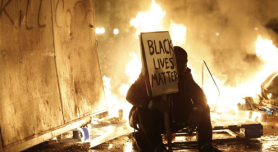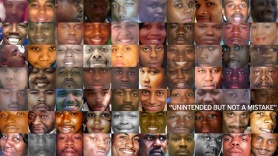From the light skin-dark skin rivalry in the Black community to the central question of Snow White–“Who’s the fairest of them all?”–colorism is everywhere. Colorism is systematic discrimination based on skin color. It insinuates that dark-skinned people are inferior to light-skinned people. Colorist ideals often manifest themselves in our society. For example, there is a clear preference towards light-skinned people in the media. The ABC series How to Get Away With Murder challenges colorist standards by starring a Black, dark-skinned woman.
While it does affect men, colorism is usually directed more towards women. Color becomes part of a never-ending, unattainable beauty checklist. But the root of the issue with beauty standards isn’t just about their unattainability. It’s the messages they send. Focusing so much on a woman’s color and other physical attributes implies that her appearance is the only thing that matters. This implication doesn’t do either of these genders justice. Women are much more than their appearance and men are more than capable of recognizing that.
Colorism is especially prevalent in India where skin color is often viewed as a sign of caste. Darker skin indicates a lower caste, while lighter skin is considered characteristic of higher castes. These assumptions generally come from the fact that people in lower castes had to do manual labor. So, they had darker skin while wealthy people from high castes could afford to stay out of the sun. However, this color bias is deeply rooted in Indian culture for many more reasons than caste. It was also reaffirmed when the British colonized us.
Lighter skin equated to better treatment in many racial hierarchies. This point was true in regards to slavery in both India and America. In the U.S., having lighter skin made integrating into White society much easier. If your skin was light enough to pass as White, you got to enjoy the privileges that came along with it. The motives for wanting light skin are complex results of long-standing hierarchies.
Unfortunately, doing whatever it takes to get lighter skin in India is normal. According to Didier Villanueva, the country manager for L’Oréal India, skin lightening creams account for half of the skin care market. One of India’s first lightening creams was “Fair and Lovely,” owned by Unilever (the same company that owns Dove). It started in 1978 and has expanded to lip balms, sunscreens and other products since then. This is not to say that colorism itself was created by these industries, but it is certainly perpetuated and exploited by them.
The skin lightening industry looks to Bollywood actors and actresses for its promotion. Their endorsement drives pop culture and deepens a color bias. This support, in turn, creates more demand for the product. For example, Emami’s line of skin lightening cream for men, “Fair and Handsome,” dominated the market after Bollywood actor Shahrukh Khan promoted it.
Additionally, Aishwarya Rai, a woman many consider the face of India, is extremely fair. Although she often defends Indian culture, much of her success is a result of colorism. Rai perpetuates this bias herself. Most actresses in Bollywood are exceptionally fair and many have even undergone skin lightening treatments. There’s nothing wrong with being fair, but there is an issue when beautiful, successful women are only portrayed as fair, eliminating the representation of darker-skinned women in the media. Not to mention: the majority of India is dark-skinned.
Colorism teaches people that color is more important than intellect, personality, and ambition. It convinces people that their worth is somehow reflected by the color—or shade—of their skin.
Indians were finally outraged when advertisement companies implied that bleaching private parts would lead to a more fulfilling sex life. In response, the Advertising Standards Council of India (ASCI) set strict guidelines for the industry. Now, companies cannot advertise lightening products by showing dark-skinned people as inferior. This includes implying that dark-skinned people are less attractive, successful, or capable.
The Dark is Beautiful campaign started by Women of Worth has also taken a stand against colorism. Thankfully, Bollywood actress Nandita Das has agreed to be the face of this fight. Yet, even in an article denouncing colorism, editors lightened Das’s picture. Of course, she instructed them to repost the original. However, this wasn’t Das’s first encounter with “helpful” corrections. When playing intelligent, successful women, she’s often told to use lightening creams.
While this Indian stigma is horrible, it’s not the only one of its kind. In the Western world, the craze for skin lightening mirrors the fight for anti-aging and tanning obsessions. In the U.S., being pale is unattractive, so women spend hours in salons trying to get a golden brown glow. Despite this desire to be darker, the ideal skin color here is still light. People continue to be wary of getting “too dark.” However, colorism creates the notion that someone can be “too dark.”
Colorism is just one aspect of the many impossible beauty standards we often judge ourselves and others by. We should be learning to focus on the beauty that does exist within people. Why should we buy into an image of beauty that’s promoted by industries who want us to fall short?
Priyanka Jhalani is a high school senior who is passionate about social justice work. Since her sophomore year, she has been heavily involved in diversity and inclusivity initiatives. She’s facilitated numerous discussions and given several speeches at her school. She’s a first generation Indian woman and lived in France during her junior year of school. When she has the time, Priyanka loves to write, read, run, and dance.
Editor’s Note: This article is the second of three in Teaching Social Justice’s first series. If you haven’t done so already, please read Priyanka’s first piece that came out in May on growing up bicultural. The final article in the series will be posted within the coming weeks.











